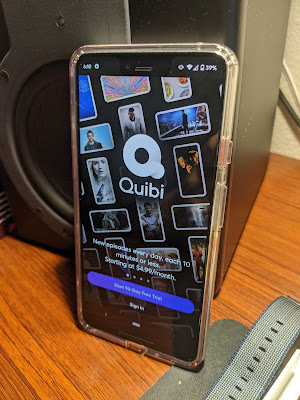However, in situations such as what millions of people the world over are currently experiencing, in the way of the COVID-19 pandemic; sometimes a sudden life-changing event acts as the impetus that motivates an individual to pursue goals and interests that are out of their comfort zones. Goals that are driven perhaps by a sense of resolution or an obligation of duty to others and the community.
As medical professionals continue to fight on the front-lines of the pandemic; often without adequate supplies or assistance. The millions of people who stay home in an attempt to contribute to flattening the curve, may find themselves wishing they could do more to shift the tide. For one such person, that desire to contribute to the battle against COVID-19 took shape in the form of direct assistance to medical professionals through the power of 3D printing, community support and public outreach.
I spoke with Elisa Gimenez Valdes Fernandez Posada about the initiative she spearheaded alongside the Laguna College of Arts and Design to produce ear-savers; a device worn around the head to relieve the strain of face-worn PPE (personal protective equipment) for medical professionals at the Mission Viejo Hospital Foundation as well as other local hospitals in Orange County. As well as the ongoing campaign to recruit people to join the cause by contributing their time and resources. At the time of writing, the MHF has requested a total of 1000 ear-savers for their staff with possibility for more requests to come in the arriving months.
What is your name, can you tell me a little about yourself?
"I’m Elisa Gimenez Valdes Fernandez Posada, I’m 22 years old, and I’m an Animation major at LCAD. I’m from Mexico City, Mexico, but I moved to California for college, so I’m a full-time international student."
I stumbled on a post made by the LCAD Twitter account that described your involvement with the ear-savers campaign. What motivated the decision to start this initiative, what's the goal?
"The idea for ear savers came from a feeling of helplessness. Being cooped up in my house, reading the news and watching the world fall to pieces outside was the scariest feeling in the world. I wanted to help, but I didn’t know how to, so I started looking for ways I could make a difference. People started posting pictures everywhere of doctors and nurses who were getting injured from their PPE. I had never even thought about how uncomfortable face masks and other PPE could be after wearing them for 12 hours a day until I saw those pictures. So, I reached out to several Orange County hospitals to gauge whether there was any need for this kind of help and the answer was a resounding yes. Along with some other hospitals requesting donations, the Mission Viejo Hospital Foundation requested 1,000 ear savers for their staff!"
Can you tell me about ear-savers? What exactly are they?
 |
(Courtesy/Thingverse)
|
I thought it was amazing that he posted the file online with a public domain license and was encouraging others to print them as well. So I did some research and found out that Ear savers are approved by the NHI for clinical use, are easily disinfected so they can be used multiple times, and according to all the testimonies I found, are actually very effective in relieving and preventing pain behind the ears caused from the face masks' elastic."
So with the design in mind, it came down to finding support to help produce the ear-savers. That's where LCAD stepped in?
"With this in mind, I reached out to Hugo Hernandez, LCAD’s Fabrication Lab’s Manager, to ask if these could be printed on our printers and he got to work right away on a prototype, and we kept going from there."
Has LCAD been supportive of the initiative?
"LCAD has been incredibly supportive, and I am very thankful and proud to be part of an organization that so readily and decisively jumped to help out. Not only have they helped with outreach and social media, but the entire project is also currently being funded by LCAD. They’ve also been doing a terrific job reaching out to students and sharing resources to help during this COVID-19 crisis. Thanks to them backing and funding the project, we've been able to offer anyone with a 3D printer willing to join our efforts support such as a downloadable template and printing instructions for the ear savers as well as PLA filament for their printers."
Now that production is moving along with the ear-savers, what's the goal?
"I’d like to get at least three more printers working with us. Once all the kinks are worked out we can get a steady supply going and focus on distributing them wherever they’re needed.
My main concern is time. I want to print them faster to make sure medical professionals don’t have to spend another day injuring themselves while helping those affected by COVID-19.
I guess I keep hoping this crisis will be over soon and then the ear savers will no longer be needed, so I want to get them out fast. I know that’s a little naive and there’s no reliable way to tell how long this will last, but that’s what I keep hoping."
What does post-pandemic look like for you?
"I don’t know what post-pandemic looks like to me. Hopefully, like before, but with an essential workers’ union, higher minimum wage, and a renewed appreciation for all the people that kept the world going when the apocalypse happened: farmers, truckers, supermarket workers, sanitation workers, and all the other essential workers we often forget about. I also hope they come up with some better fail-safes to make sure something like this doesn’t ever happen again."
For more information on how you can contribute to Elisa and LCAD's ear-saver initiative, the following links are provided.
https://www.facebook.com/LCADBFA/
https://www.instagram.com/lcadbfa/?hl=en



